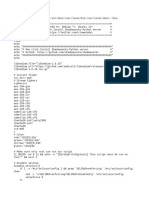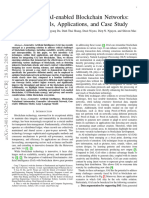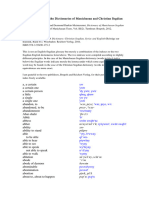0% found this document useful (0 votes)
286 views6 pagesChatgpt Code
Here is a draft of the letter you can send:
Dear Neighbor,
[Neighbor's Name],
I wanted to introduce myself as your new neighbor. My name is [Your Name] and I recently moved into the house at [Your Address].
I am looking forward to getting to know my new community. Please feel free to stop by for a visit anytime. I hope we can build a friendly relationship.
If there is any way I can help you or participate in neighborhood activities, please let me know. I aim to be an engaged member of this community.
Warm regards,
[Your Name]
Please feel free to modify or personalize the letter as you see fit.
Uploaded by
siham ssCopyright
© © All Rights Reserved
We take content rights seriously. If you suspect this is your content, claim it here.
Available Formats
Download as DOCX, PDF, TXT or read online on Scribd
0% found this document useful (0 votes)
286 views6 pagesChatgpt Code
Here is a draft of the letter you can send:
Dear Neighbor,
[Neighbor's Name],
I wanted to introduce myself as your new neighbor. My name is [Your Name] and I recently moved into the house at [Your Address].
I am looking forward to getting to know my new community. Please feel free to stop by for a visit anytime. I hope we can build a friendly relationship.
If there is any way I can help you or participate in neighborhood activities, please let me know. I aim to be an engaged member of this community.
Warm regards,
[Your Name]
Please feel free to modify or personalize the letter as you see fit.
Uploaded by
siham ssCopyright
© © All Rights Reserved
We take content rights seriously. If you suspect this is your content, claim it here.
Available Formats
Download as DOCX, PDF, TXT or read online on Scribd
/ 6

























































































